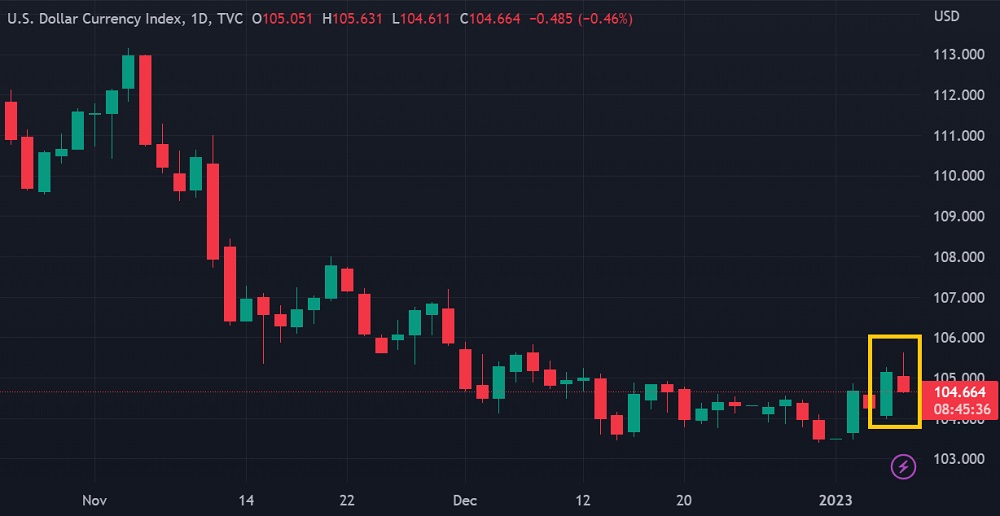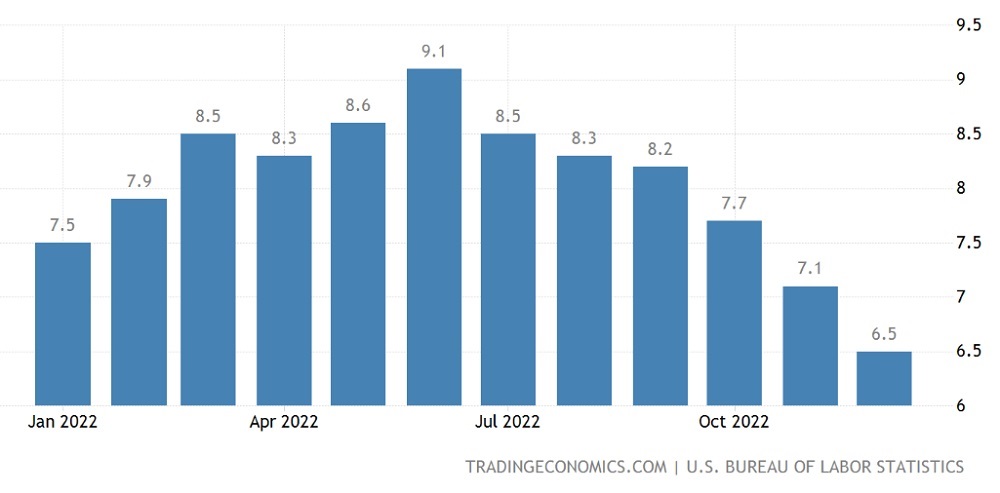The US Dollar is falling as Non-farm Payroll and employee wages are on a general downward trend.
The US dollar index (DXY) fell to the 104.60 range again following the release of Non-farm Payroll data tonight (6/January). The Non-farm Payroll data shows actual numbers that beat market estimates but are still on a generally downward trend.
Such data support the Fed's more dovish policy projections and dampens the spark of optimism that had spread yesterday. As a consequence, the greenback has suffered tremendous pressure. AUD/USD and NZD/USD surged nearly 1 percent, while EUR/USD and GBP/USD jumped more than 0.7 percent each.

Non-farm Payroll data shows an increase of 223k in December 2022 or more than the consensus estimate of 200k. However, the NFP figure was lower than in the previous period. November 2022 NFP data was also revised down from 263k to 256k.

The other components in tonight's US employment data package suggest a mixed bag. The unemployment rate fell from 3.6 percent to 3.5 percent, much better than the estimated 3.7 percent. However, growth in average hourly earnings has slowed.
Average hourly earnings grew 0.3 percent (Month-over-Month) in December, or slower than the estimated 0.4 percent. Meanwhile, November growth was revised from 0.6 percent to just 0.4 percent. As a result, growth in average hourly earnings on an annual basis fell from 5.1 percent to 4.6 percent.
Employee salaries are one of the factors driving domestic inflation. Thus, the wage slowdown signals reduced inflationary pressure in subsequent periods. If inflation declined, the Fed would not need to continue "rate hikes" aggressively or keep interest rates high for too long.
Viraj Patel, the strategist at Vanda Research, said, "Sharp job increase, more labor supply (increase in participation rate). Doesn't change the trajectory (policy direction) of the Fed. Weaker wages give them (the Fed) time to raise (interest rates) slowly."

 Dedicated FREE FOREX VPS
Dedicated FREE FOREX VPS Free FOREX Virtual Private Server
Free FOREX Virtual Private Server MT4 Demo Contest, Get $500
MT4 Demo Contest, Get $500 Sign Up for an Account, Claim 60% Deposit Bonus
Sign Up for an Account, Claim 60% Deposit Bonus Free MT4/MT5 VPS 2024
Free MT4/MT5 VPS 2024 Send E-mail and Get Free Merchandise
Send E-mail and Get Free Merchandise $1K Refer a Friend Bonus for Pepperstone Pro clients
$1K Refer a Friend Bonus for Pepperstone Pro clients Maximize Your Earnings with 100% Deposit bonus
Maximize Your Earnings with 100% Deposit bonus Trade to Win, $5,000 Monthly Demo Contest
Trade to Win, $5,000 Monthly Demo Contest Claim 30% + 15% Deposit Bonus from LiteFinance
Claim 30% + 15% Deposit Bonus from LiteFinance






